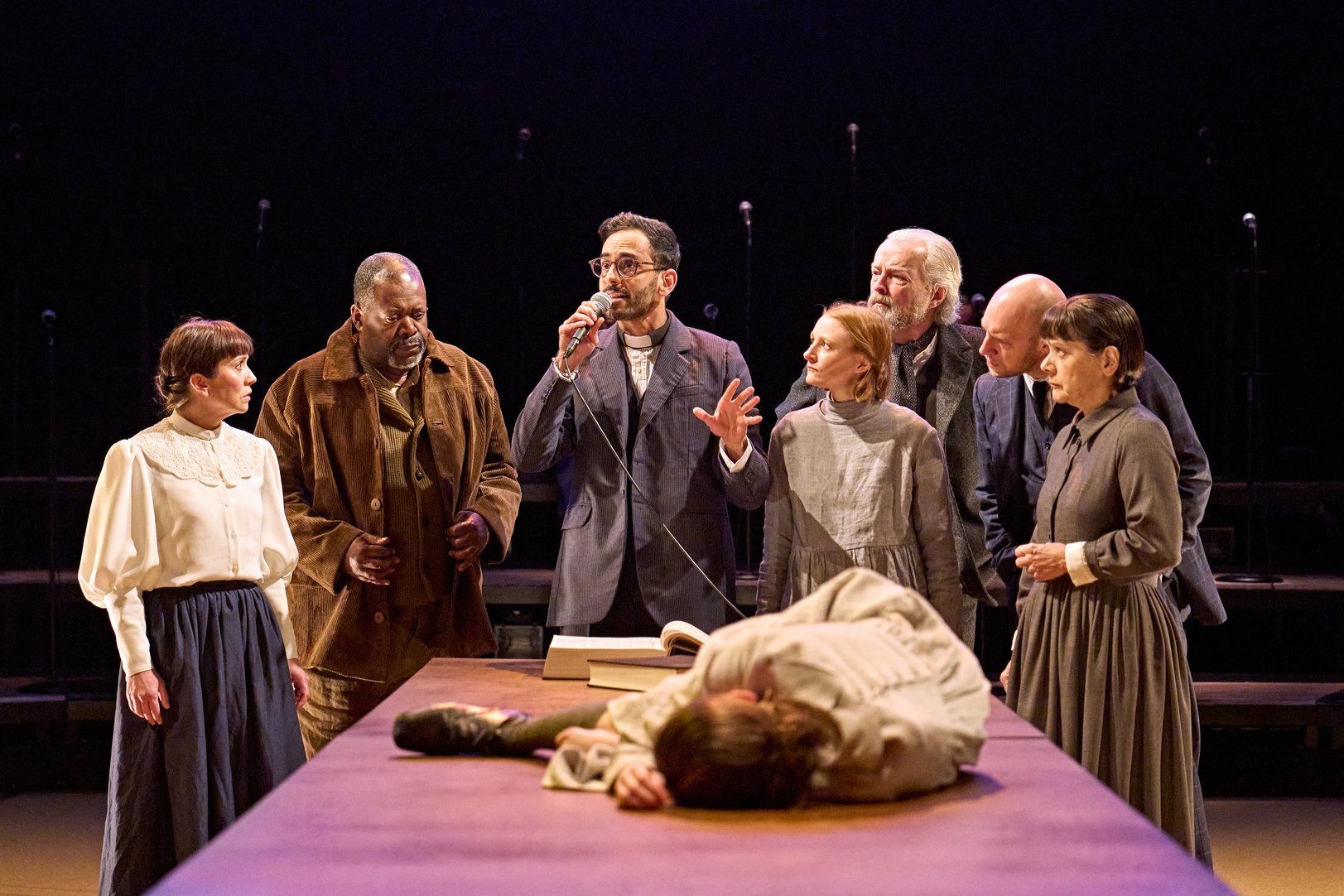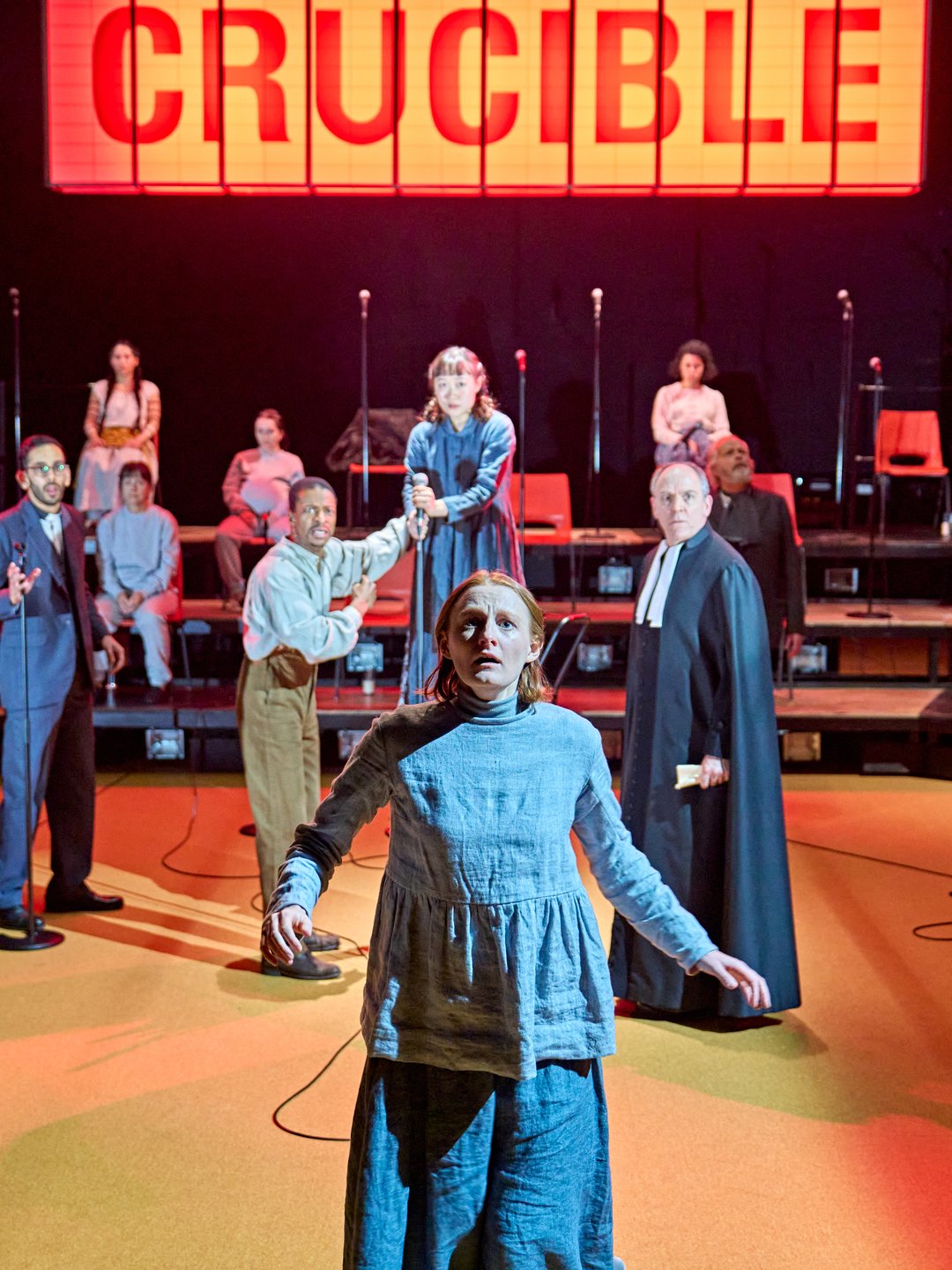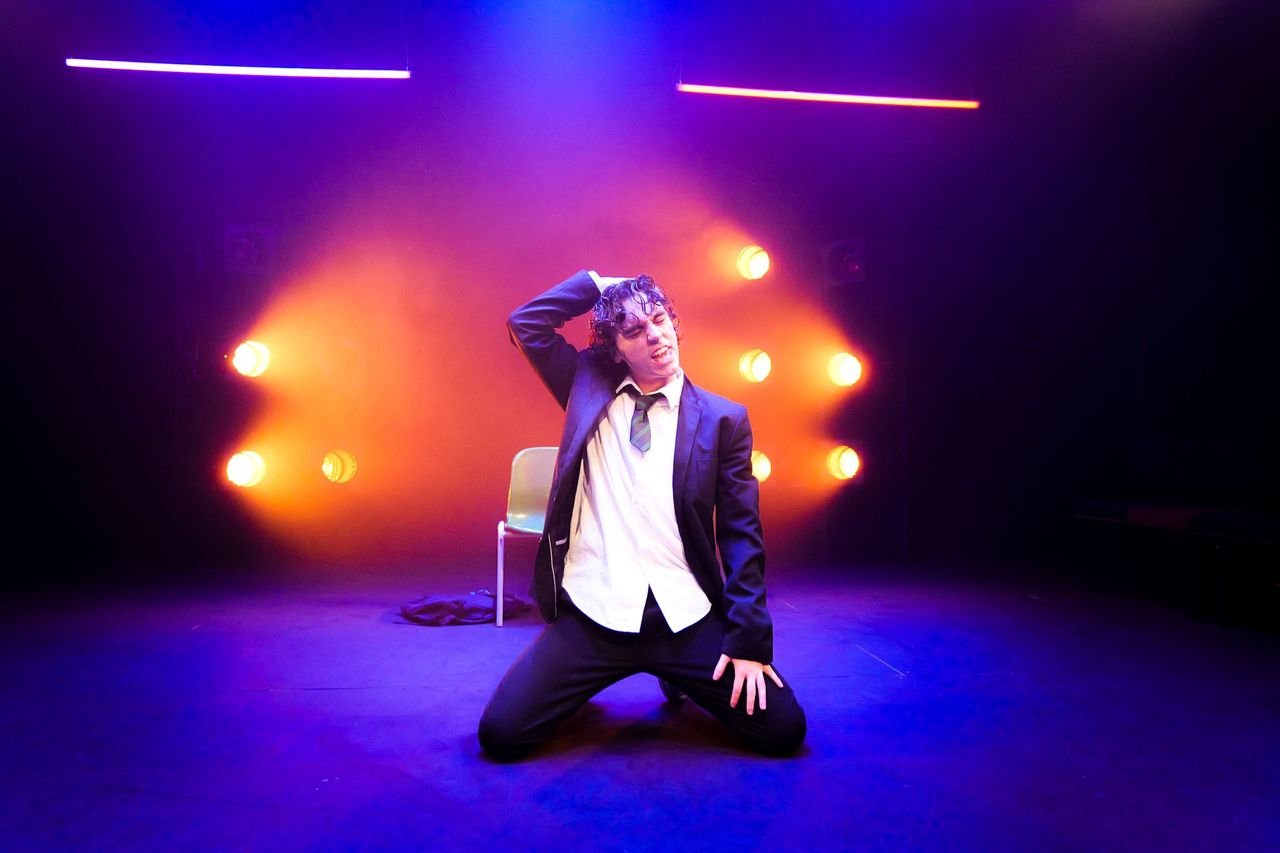The Crucible, Crucible Theatre Sheffield Review
Anoushka Lucas (Elizabeth Proctor) and Simon Manyonda (John Proctor) in The Crucible. Photo by Manuel Harlan.Written by Kirsty for Theatre & Tonic
Disclaimer: Gifted tickets in exchange for an honest review.
The Arthur Miller classic has received another revival this time at The Crucible Theatre, which in itself has an element of meta irony to it, however, this new production brings Salem, Massachusetts to life in a way that I have never seen before.
Directed by Anthony Lau, we are taken to the heart of a community in the grasp of mass hysteria and fear driven by the rumour of witchcraft amongst the young girls of the community. Lau’s direction brings the audience right into the action, and we as well as the community are asked if you are willing to go against the herd, no matter the cost. From the stark opening introduction giving the history of Salem, and the puritanical community that has grown in the area. Miller wrote the play in 1953 as an allegory for McCarthyism and the US Government hunt for Communists and the persecution of the accused that followed.
Georgia Lowe’s set design is stark and foreboding with a minimal set with a table and a number of chairs being the main set pieces, the inclusion of an illuminated copy of the front of the Crucible Theatre giving the idea of the fourth wall being reduced even before the play opened. This continues throughout the show, with a number of times where the house lights are brought up and the audience are addressed and these moments did feel like we were part of the wider Salem community. This was especially true during the trials in Act 2 where Ian Drysdale’s Danforth directly speaks to the audience, going so far as to point to an audience member accusing them of witchcraft. Danforth is unyielding in his desire to deliver the law, even when it is clear that the law is doing more harm than good, and Drysdale is chilling in the final scenes. Jess Bernberg’s lighting design helps to move the action along and was most effective when the lighting was used as a method of showing when the spirits were attacking the good people of Salem. When used alongside Giles Thomas’s sound design these elements were more effective than any large set would have been. The use of hand microphones was interesting, and on the whole, worked very well. The sound of the mic reverb and certain portions being delivered into the microphone again increased the tension throughout the play especially when used by Reverend Parris in a way that would not be out of place in an evangelical mega Church, or when Abigail Williams is spreading her vitriolic bile.
The costumes whilst simple were effective, with a mix of modern day tracksuits acting as prison wear, and simplified puritanical garb reminded us of the time and setting of the play.
Parris played by Sargon Yelda, appears on the surface as a pious preacher searching for the malevolent spirits tearing through the people of Salem, it is soon apparent that Parris is self serving, and his biggest fear is not witchcraft, but poverty which seems to go against the image of a puritanical preacher. We see Parris fall under the spell of the mass hysteria that runs through the town and in the witch trials we see the person behind the robes and I was left feeling that Godly intentions were the least of his concerns. He willingly allows his servant Tituba, played by Giullianna Martinez, to be one of the first to be arrested for witchcraft, and is blinded by the manipulation of the young girls led by his niece Abigail Williams.
Abigail Williams, played by Rose Shalloo, is a complex character and she is undoubtedly acting as the puppetmaster in the piece. She is a woman scorned, and when she is caught acting ungodly by dancing in the woods trying to raise spirits she is willing to take the whole town down with her rather than face the consequences of her actions. The scenes where Abigail is with Betty Parris, Mercy Lewis, and Mary Warren you see how easy it is for them to manipulate the town and each other. It is a relationship of mutual self destruction especially when Millicent Wong’s Mary Warren is trying to tell the truth and Abigail whips the other girls up to suggest that Mary Warren is a witch and trying to destroy them. Shalloo shows the evil intent of Abigail so well, and there can be little to no sympathy for Abigail by the end of the piece.
John and Elizabeth Proctor, played by Simon Manyonda and Anoushka Lucas, are the ultimate victims of Abigail and the hysteria whipped up in the town, simply for the fact that Abigail and John had a secret affair when she was working for the Proctors, and after she is thrown out by Elizabeth it is crystal clear that Abigail is intent on the destruction of the couple. Manyonda and Lucas show the Proctors as a simple couple who want to save each other at all cost and even when one is trying to save the other they fail. The final scene shared by Mayonda and Lucas was played to emotional perfection, and we see that John Proctor is willing to die rather than have his name called into question.
Sid Sagar’s Reverend Hale, who is brought in at the beginning to exorcise Betty Parris, is another character that runs the gamut of emotions and feelings in the play. We see Hale trying to temper the hysterical actions of the court where anyone who goes against the court or the “officials of the court” are arrested and put on trial. The audience realises along with Hale that this court is no longer looking for witches simply looking for any descenders against what the court is telling the people what they should believe. The moment of him washing his hands of the whole proceedings and returning to try and save the souls of the soon to be hanged was truly magnificent and without doubt Hale is the true human conscience of the town and this comes too late.
There were truly no weak performances, with special mention to Mark Weinman’s Thomas Putnam and Joseph Langdon’s Ezekial Cheever.
It is a testament to the strength of Miller’s writing that the piece still feels as relevant to modern audiences as it would have done 70 years ago. The audience is ultimately left wondering how would they react in a similar situation, and who would be strong enough to stand against the masses for a better outcome?
At Sheffield Crucible until 30 March.
★★★★.5











